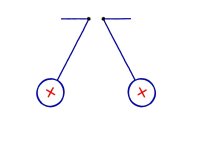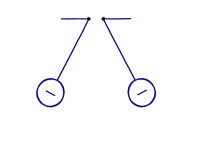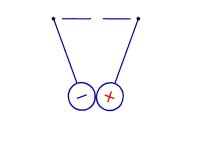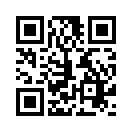[004] Cation and anion, attraction and repulsion (GB#101D01) | 基礎医学教育研究会(KIKKEN)Lab

● No ion no life
In the medical qualification examination which mainly deals with hand treatment such as physical therapist and judo therapist, the work of ions will be about to be asked in very few questions of physiology. That’s why ions seem to be less interested in these students. However, ion is an important actor who appears naturally around physiology as a matter of course, clinical medicine such as internal medicine and pathology.
—
Contents
● The most important ions in the body
The important ions of work in basic medicine are limited.
Sodium ion (Na+), potassium ion (K+), calcium ion (Ca2+), hydrogen ion (H+), bicarbonate ion (HCO3–), etc.
In addition to this, it is also possible to use chloride ion (Cl–), phosphate ions (PO43-), hydrogen phosphate ion (H2PO4–) can not be ignored as being present. But, in terms of textbooks, there is no particular independent work.
● Ions are coming in and going out without being noticed
Even people who are interested in the mechanism of the body may just feel strange even if they hear that electricity is working in the body. Speaking of electricity, do you remember the thing that happens for a moment in the dry season? That static electricity has a shock, but in reality it is not much related to the electricity working in the body. Electricity moving our body does not make me feel anything there. Moreover, it does not seem to be taking in from the outside like food and drink. It does not go out in the form like urine or sweat, so we can not go to our consciousness at all. But, really, our body does not notice, it captures and outputs electricity properly. We do not notice because we are putting out positive and negative electricity together.
● In the micro world the electricity is biased
What we usually say “there is electricity” is exactly speaking of electricity shift or “biased electric movement”. The substances making up the body, the contents of the substances coming in and going out are always filled with positive electricity and negative electricity. If there are the same number of positive and negative, there is no bias, so there is no “electricity” on the face. However, the positive electricity and the negative electricity of the contents are not extinguished. Depending on the substance, depending on the place, bias of electricity occurs and disappears in the body, it is an important key to move life activities. Small particles with bias of electricity are very active in the body. That’s “ion”.
● Cations and anions
Ions are electric particles. It can be an atom or a molecule. Bicarbonate ion is ionized molecule. Positive electric (+) charged ones are called cation, negative (-) are called anion. “Minus ion” is a unique term in the Japanese industry such as health equipments, it is implied in the meaning that it is different from the “anion” which exists in reality. Be careful not to confuse the two.
In the case of atoms, whether they become cations or anions is determined respectively. At least at the level of textbooks of physiology, when a metal atom, such as sodium atom (Na), becomes a positive ion, when a chlorine atom (Cl) becomes an ion, it must be an anion (Cl–). When a calcium atom becomes an ion, it always becomes a cation with two positive electricity (this is called a bivalent cation).
● Cations and anions attract
The nature that cations![]() and anions
and anions![]() are attracted, and ions of the same polarity repel each other is the basis of the workings of ions. For example, when determining the shape of a molecule, when molecules and ions, molecules and molecules stick to and separate from each other, they work with several other factors. However, physiological anatomy of elementary level does not have much to describe the mechanism of actual physiology finely by using its properties. It is okay if you remember roughly that it is an important property that works when objects are made or broken or cells react in the body.
are attracted, and ions of the same polarity repel each other is the basis of the workings of ions. For example, when determining the shape of a molecule, when molecules and ions, molecules and molecules stick to and separate from each other, they work with several other factors. However, physiological anatomy of elementary level does not have much to describe the mechanism of actual physiology finely by using its properties. It is okay if you remember roughly that it is an important property that works when objects are made or broken or cells react in the body.


We will introduce the important scenes of physiology where ions work, on another occasion.
Since the electricity that an ion has is different from ordinary static electricity, even if a cation and an anion come into contact with each other, only the electricity that it has will flow and will not disappear somewhere.
⇒If you want to know more about ions
⇒If you want to know more about ions
⇒If you want to know more about sodium
⇒If you want to know more about potassium
⇒If you would like to know more about bicarbonate ion
○ Related articles
◆[013] 細胞膜の脂質二重層 lipid bilayer of the cell membrane ![]()
◆[011] 体内の酸性・アルカリ性と炭酸ガス body acid-base reaction and carbon dioxide gas ![]()
◆[021] Action potential ![]()
◆[024] Voltage-dependent sodium channel ![]()
◆[036] Ligand-gated ion channel ![]()
◆[028] Resting membrane potential ![]()
◆[031] 興奮伝導 conduction of excitation ![]()
○ Referenced books
・細胞の分子生物学,ニュートンプレス; 第5版 (2010/01)
・カラー図解 人体の正常構造と機能 全10巻縮刷版,坂井 建雄,日本医事新報社
・人体機能生理学,杉 晴夫,南江堂
・トートラ人体解剖生理学 原書8版,丸善
・イラスト解剖学,松村 讓兒,中外医学社
・柔道整復学校協会編「生理学」,南江堂
・東洋療法学校協会編「生理学」,医歯薬出版株式会社
rev.20160403,rev.20170205.
KISO-IGAKU-KYOIKU-KENKYUKAI(KIKKEN)








